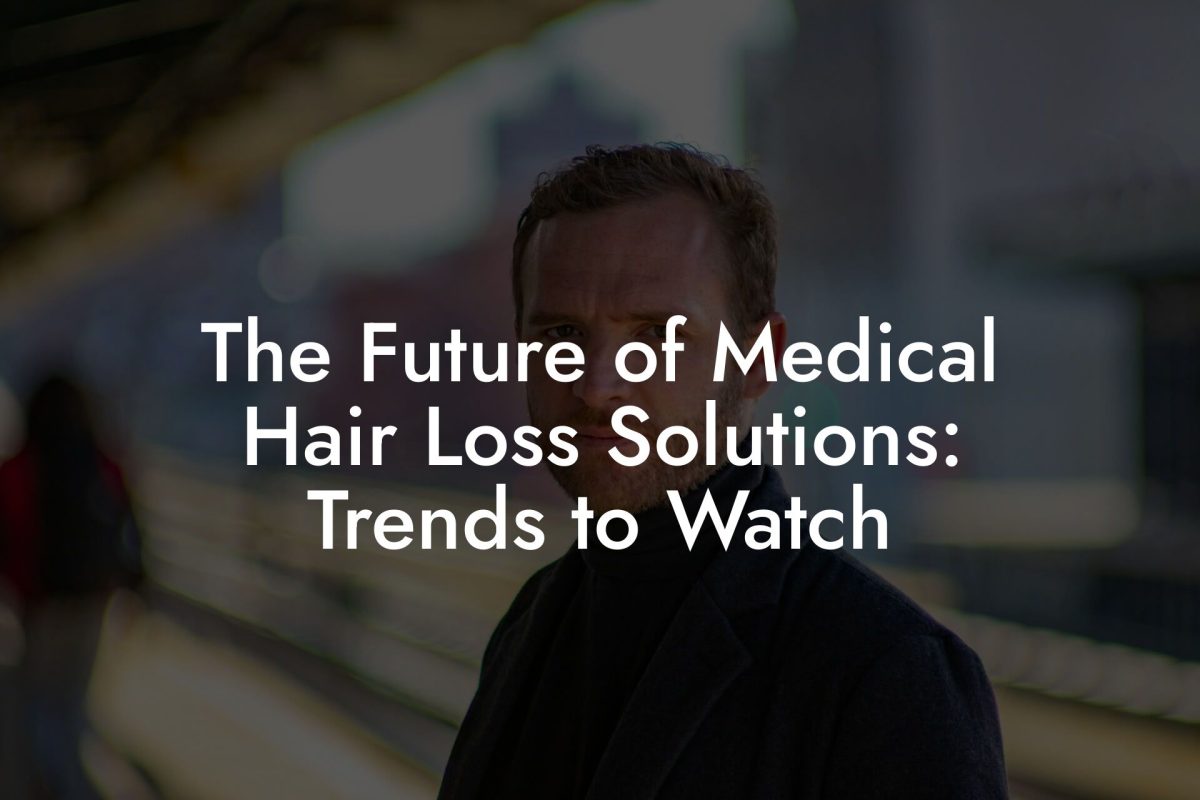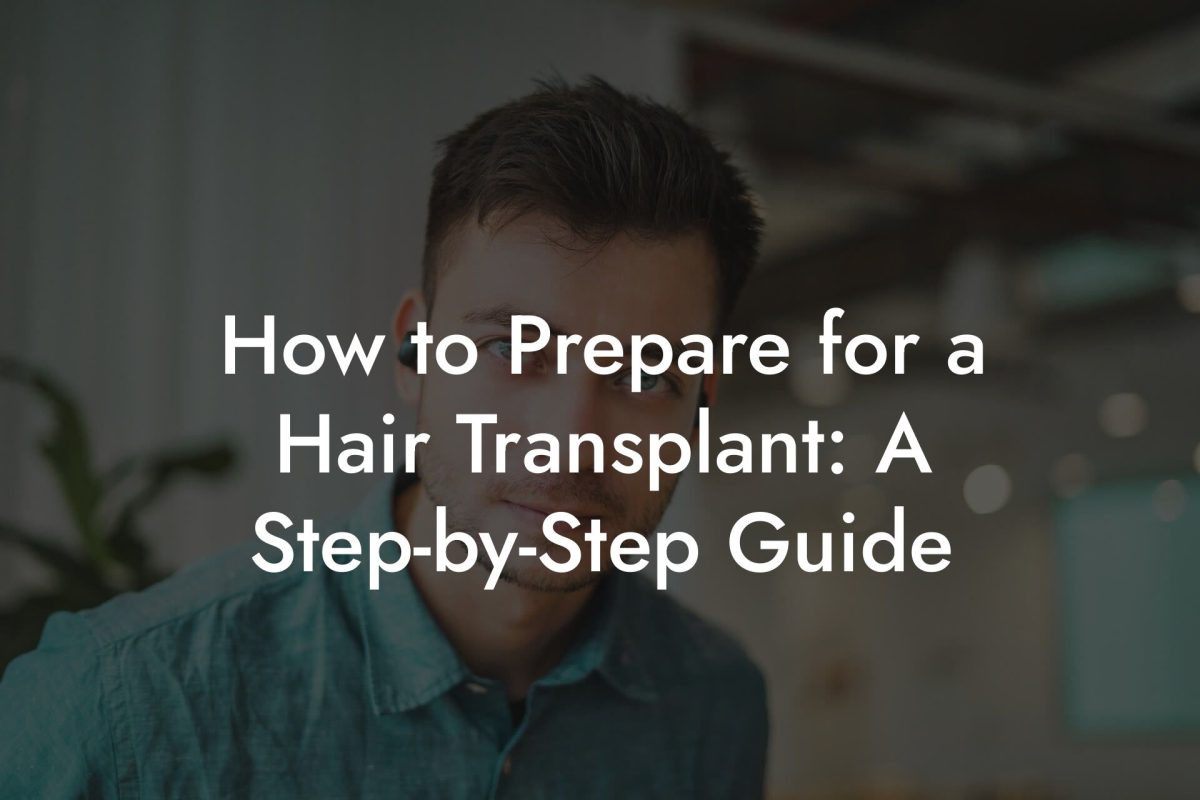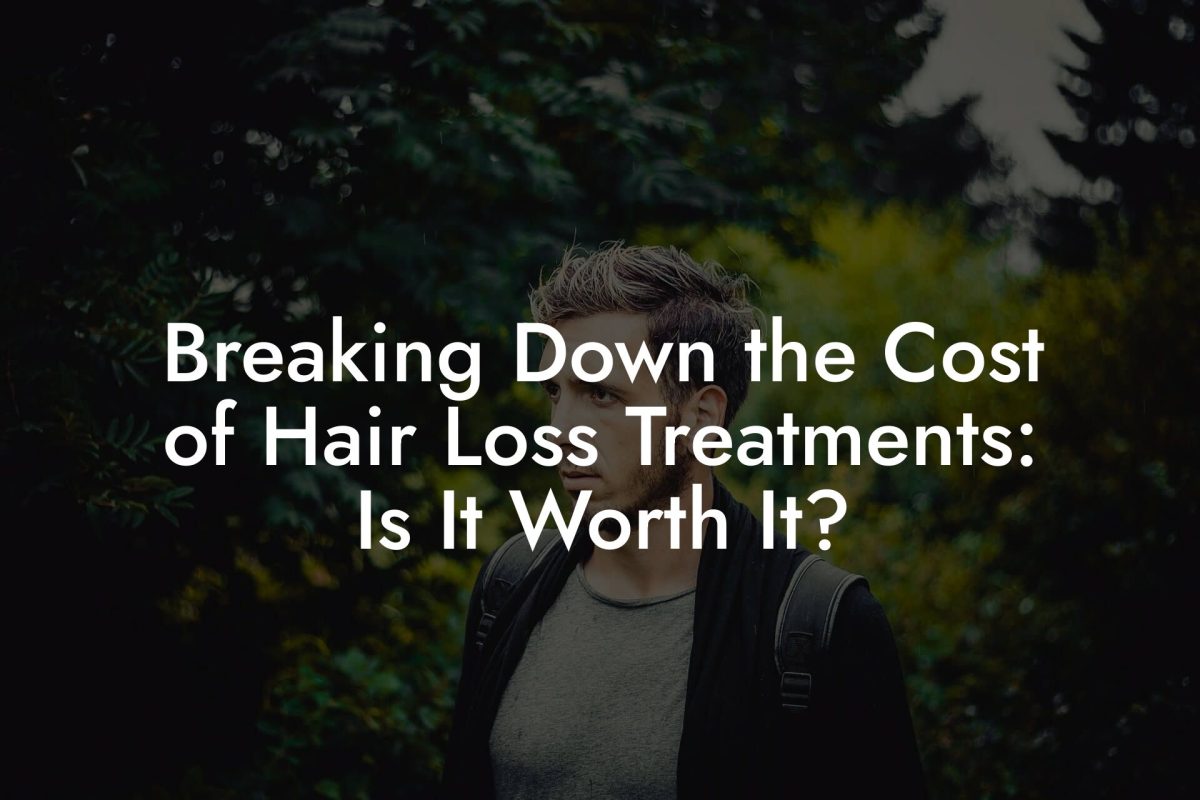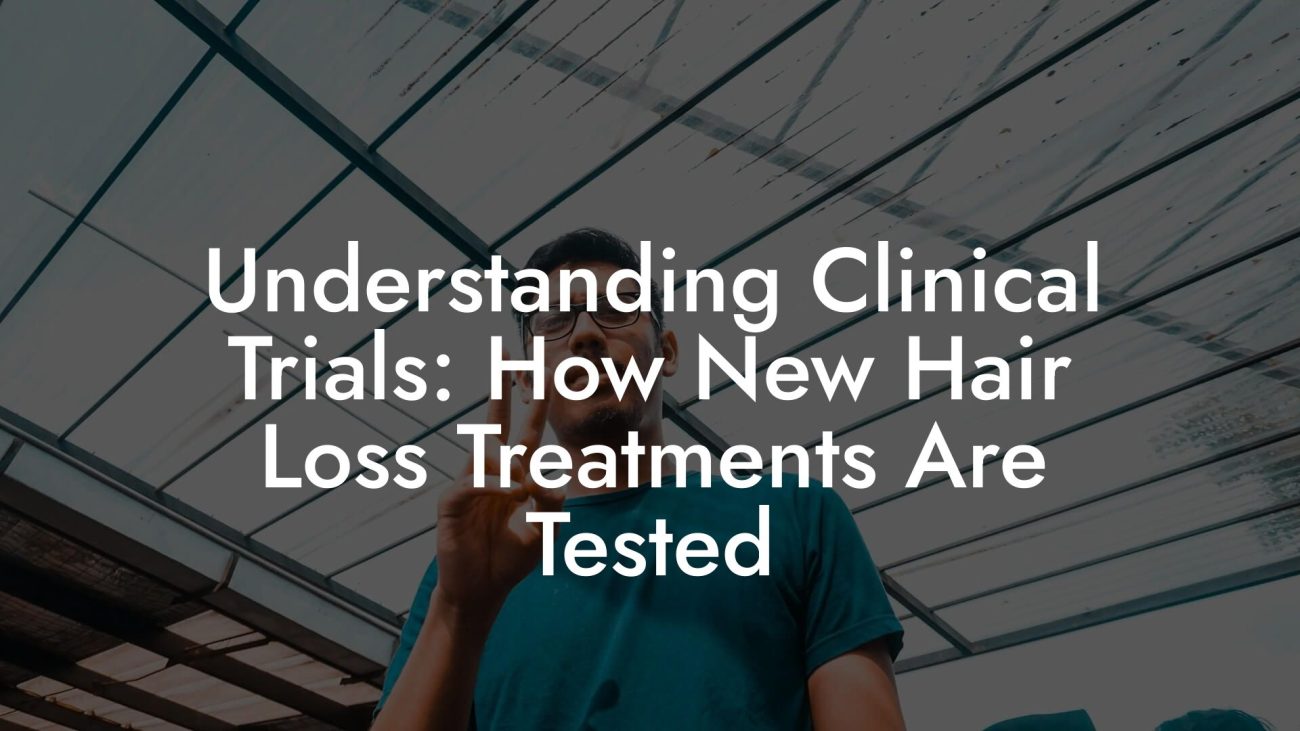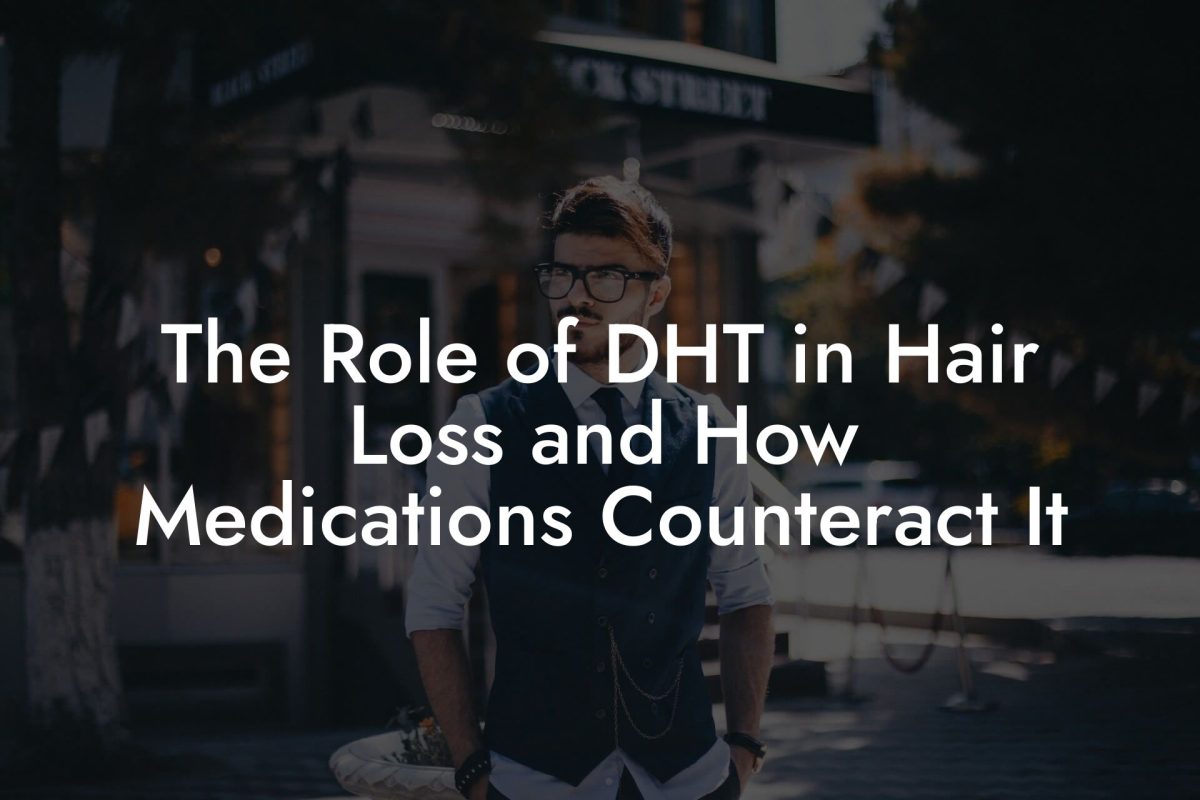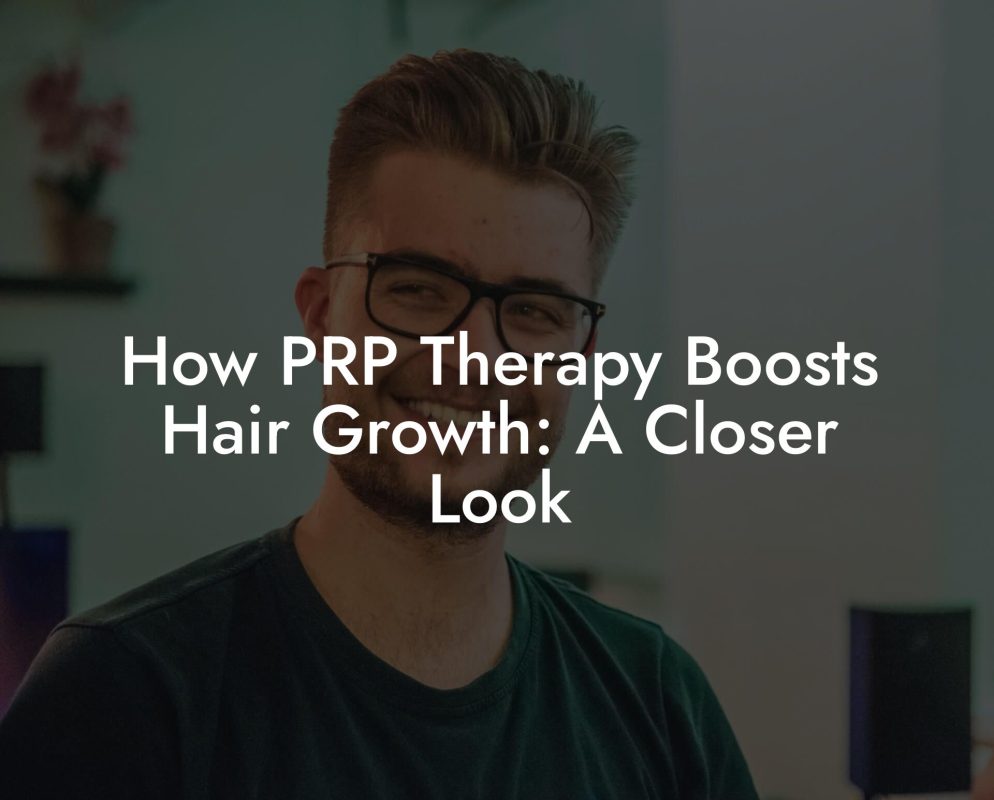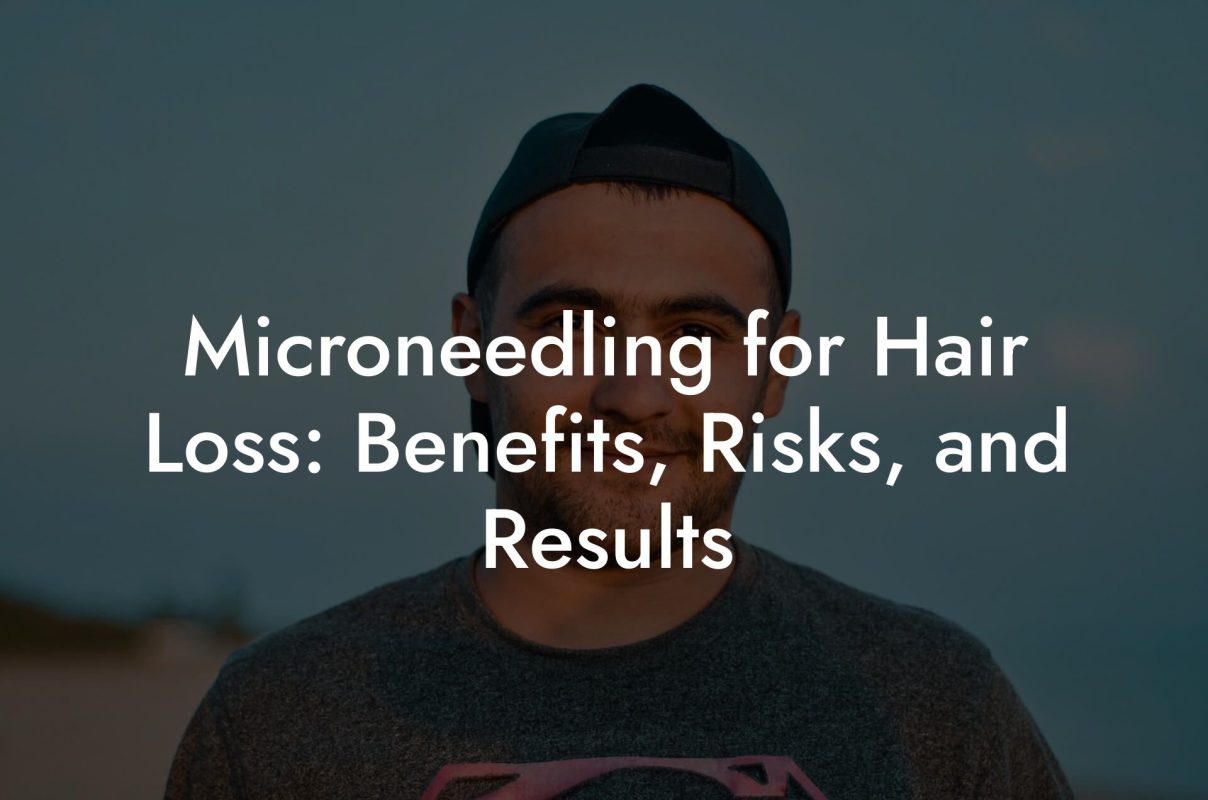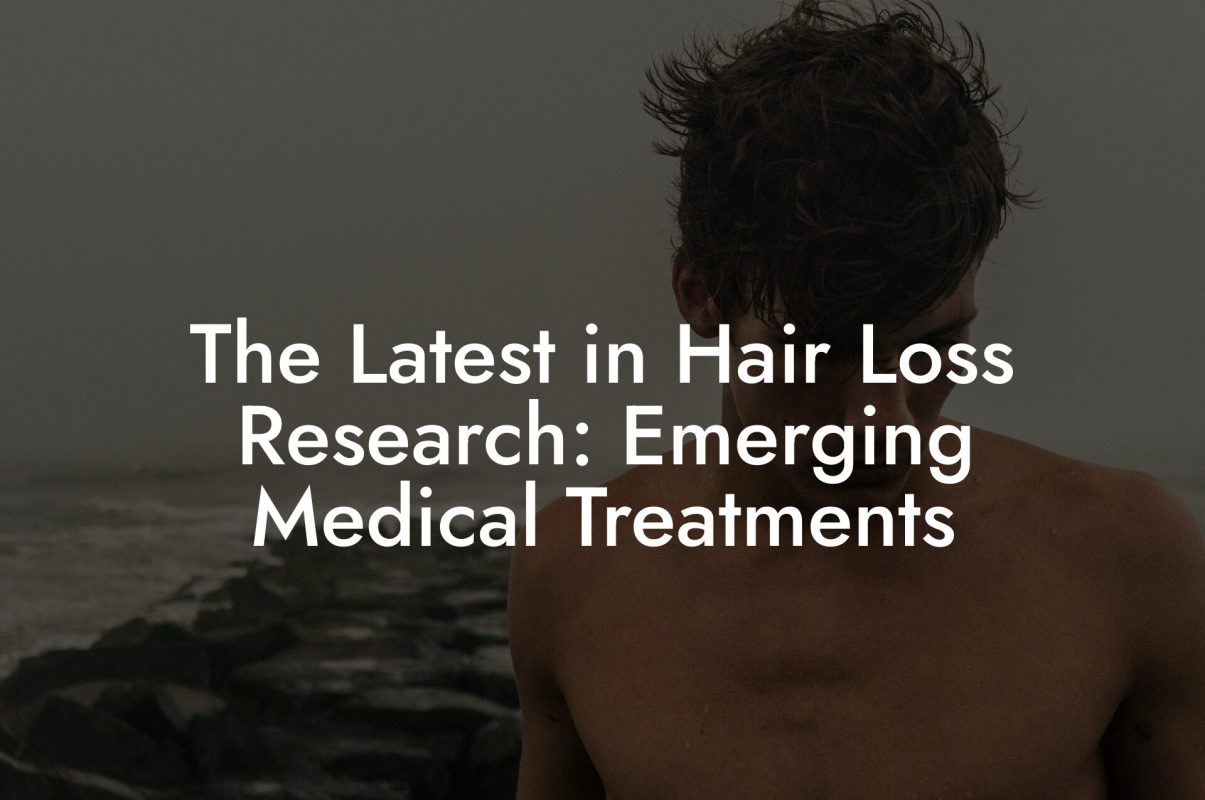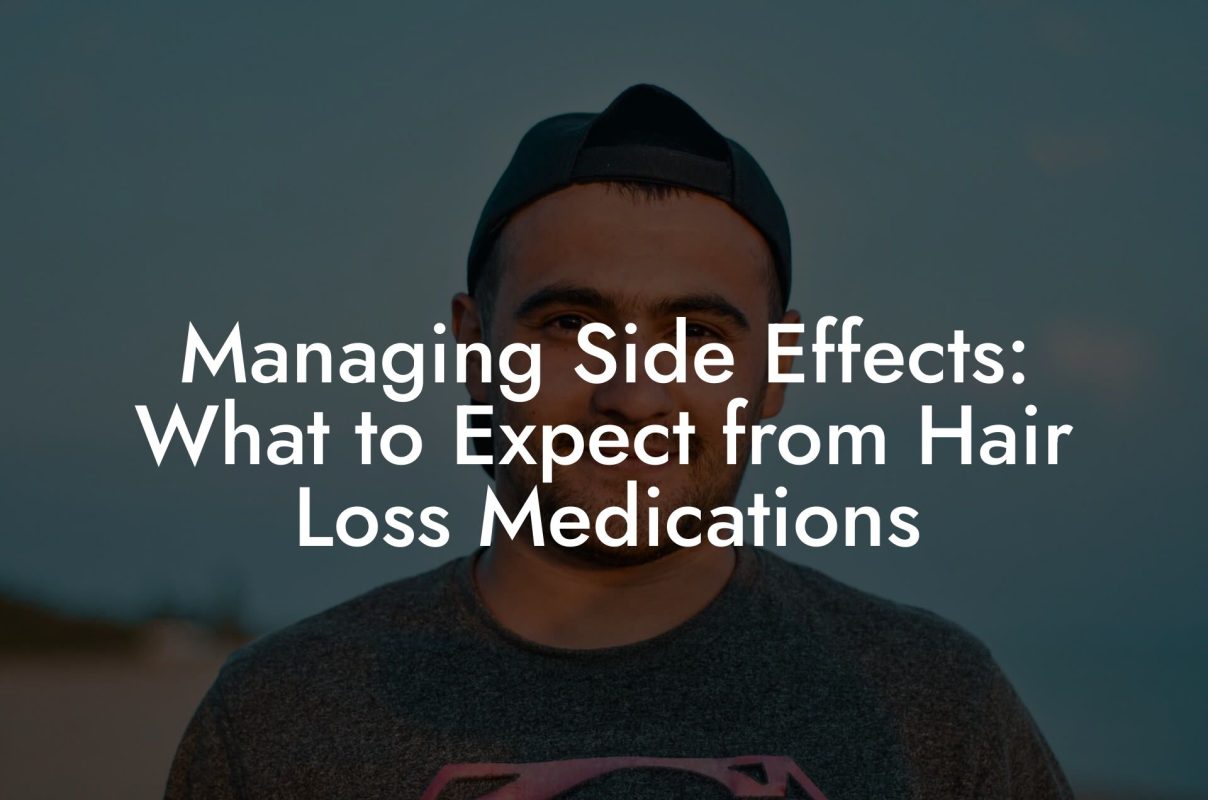Hair Loss Library
Post-Treatment Care: Maximizing Results After Hair Loss Procedures
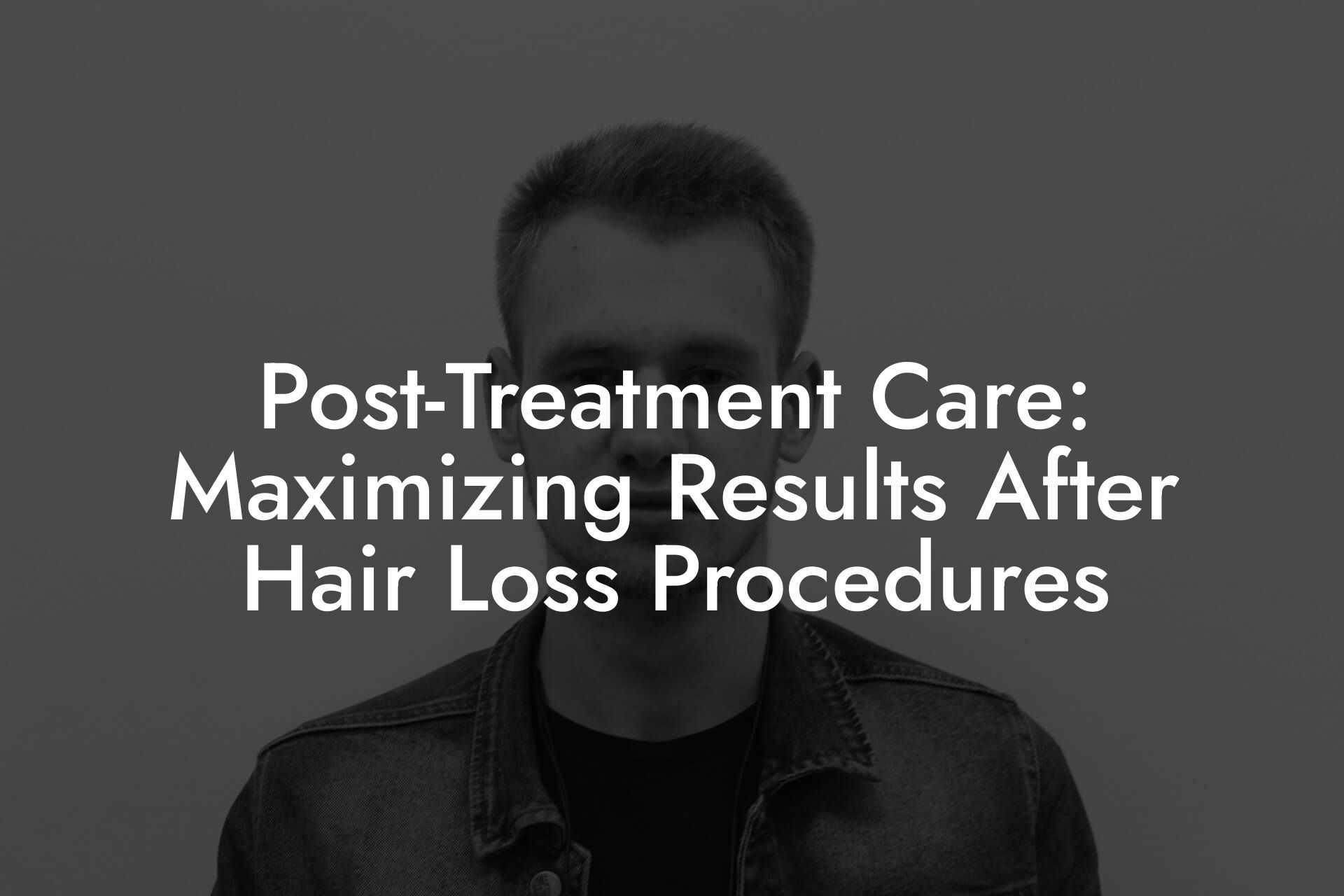
Picture this: You’ve finally taken the plunge—opting for a cutting-edge hair loss procedure that’s going to have you feeling like you just stepped off the runway. But wait! The magic doesn’t end once you leave the clinic. Just like any epic transformation, the secret sauce is in your follow-through. Welcome to Post-Treatment Care: Maximizing Results After Hair Loss Procedures—a guide that’s equal parts savvy and real. Whether you’re a millennial hustling through life or a Gen Z trendsetter who embraces self-care, this comprehensive guide by Mane Matrix is here to ensure you rock your post-procedure recovery like a boss, without the awkward doctor visits or sky-high fees.
Understanding the Journey: Why Post-Treatment Care Matters
You’ve invested time, money, and trust into your hair restoration procedure, so why risk undoing all that hard work? Post-treatment care isn’t just a checklist—it’s a lifestyle. It’s about turning your recovery from a bland recoup period into an epic wellness journey. From smart grooming habits and nutrition tweaks to mindset shifts and lifestyle adjustments, every little choice you make can significantly amplify the results of your procedure. Think of it as the ultimate upgrade package for your hair health.
In the world of modern hair restoration, your recovery plan is as crucial as the procedure itself. The science is solid: proper post-treatment care can reduce inflammation, optimize blood circulation, and provide the nourishment your follicles need to thrive. So, whether you’re rocking a new hairline or just trying to stop further hair loss, this is your backstage pass to maintaining—and even maximizing—the gains you’ve worked so hard to achieve.
Let’s dive deep into the world of aftercare, where we blend expert insights, a dash of humor, and the kind of relatable advice that makes you want to high-five your reflection in the mirror every morning.
Setting the Stage: What to Expect After Your Hair Loss Procedure
First things first: transformations take time! Much like watching your favorite series with a twist ending, your body needs time to adjust and heal. The period immediately following your hair loss procedure is critical. During these early days, your scalp is in a delicate recovery phase, and every decision—from the temperature of your shower water to the type of pillowcase you use—can influence the outcome.
Typically, you might experience mild swelling, some redness, and even a bit of numbness in the treated areas. Don’t panic! These are common side effects that signal your body is in repair mode. The key? Listen to your scalp (and your body) and give them the TLC they deserve. Post-procedure care means following your doctor’s advice, avoiding strenuous activities that might aggravate the scalp, and keeping a close eye on any unusual changes.
Now, before you ask, yes, that means skipping out on intense gym sessions for a little while. While it might feel like the universe is telling you to hit the pause button on your trade-offs (and who doesn’t love a good gym session?), think of it as investing in long-term hair luxury over a temporary gym hustle.
Building Your Post-Treatment Regimen: The Basics of Recovery
Recovery is all about balance, blending smart science and some old-school self-love. Here are the key elements every recovery superstar should embrace:
- Follow Your Specialist’s Orders: Your doctor isn’t just a fancy title—he’s the expert who knows what your hair and scalp need right now. Follow their instructions to the letter, even if it means putting off your next big hair flip until then.
- Be Gentle with Your Scalp: Your scalp is like a freshly-painted canvas. It needs delicate care. Use mild shampoos, avoid heavy styling products, and steer clear of rough towel-drying or aggressive rubbing.
- Opt for Cool, Not Cold: When it comes to washing your hair, lukewarm water is your best friend. Hot water can exacerbate swelling and sensitivity, while cool water helps soothe and promote healing.
- Nourish, Hydrate, and Moisturize: Recovery fuels growth. Use a gentle, doctor-recommended conditioner and consider scalp serums that hydrate and provide essential nutrients. Think of these products as a spa day for your follicles.
The idea is simple: treat your scalp the way you’d treat your most prized sneaker collection—handle it with care, keep it clean, and always prioritize quality over quantity.
The Science of Healing: How Post-Treatment Care Boosts Your Results
Ever wonder what all this fuss about aftercare is really doing? It’s not just for show—in fact, there’s some pretty neat science behind it. When you undergo a hair loss procedure, you’re not only repositioning or stimulating hair follicles, but you’re also triggering your body’s natural healing processes. Proper care accelerates this process, ensuring that your new or revitalized hair follicles have the best possible environment to grow.
Here’s the lowdown: good post-treatment care helps reduce inflammation, a key culprit in slowing down hair regrowth. It increases blood circulation, delivering oxygen and nutrients to your hair follicles, and even helps in balancing hormones that can affect hair growth. So, every time you follow your aftercare routine, you’re giving your scalp a micro-boost that compounds over time.
And luckily, this isn’t some dull science lecture. Think of it as your scalp’s personal cheerleading squad, working behind the scenes to ensure that every strand is happy, healthy, and ready to shine.
Grooming 101: Everyday Habits That Make a Big Difference
Post-treatment care isn’t just about what you do in the clinic—it’s also about the everyday habits that keep your scalp in top shape. Here’s a rundown of some key grooming tips that every hair care enthusiast should have in their arsenal:
1. Washing Wonders
When it comes to cleanliness, less is more—but quality is key. Use a gentle, sulfate-free shampoo to avoid stripping your scalp of its natural oils, which are essential for healing. Imagine washing your hair like you’d handle a delicate piece of art.
2. The Art of Patting Dry
After your wash, ditch the rough towel-drying. Instead, gently pat your hair dry to minimize friction and prevent any accidental pulling of your new gains. Soft cotton towels or even microfiber options are ideal—they’re gentle on your scalp and help reduce irritation.
3. Styling Without Stress
We know it’s tempting to jump right back into styling with gels, pomades, or that new matte finish spray. But in the early days, opt for minimal styling. Let your hair air dry naturally and avoid heavy mechanical treatments like tight ponytails or aggressive brushing. Your scalp will thank you for it.
4. Sun Protection is a Must
The sun is gorgeous, but UV rays can be harsh on a healing scalp. Whether you’re out running errands or hitting the beach, wear a hat or use a sunscreen spray formulated for the scalp. This isn’t just about avoiding sunburn—it’s about locking in your treatment results for the long haul.
Maintaining these everyday habits may seem like a tall order amid early recovery, but trust us—it’s these small changes that pave the way for long-lasting, healthier hair.
What to Avoid: Common Pitfalls in Post-Treatment Care
Even in the best-laid plans of hair enthusiasts, there can be pitfalls. Here are some common mistakes that can derail your recovery progress:
- Over-Exfoliating: While it might seem like a good idea to scrub away dead skin cells, overly vigorous exfoliation can irritate a delicate scalp. Hold off on any harsh exfoliants until your specialist gives you the green light.
- Heavy Chemicals: Ditch anything too harsh. Avoid products loaded with sulfates, parabens, or alcohol—ingredients that could disrupt the natural healing process and cause additional dryness or irritation.
- Excessive Heat: Steer clear of heat-styling tools like blow dryers, straighteners, or curling irons in the immediate recovery period. If you must style, use a low-heat setting and always apply a heat protectant spray.
- Stress Overload: Believe it or not, stress can actually impact your hair’s ability to heal. High cortisol levels may impede healing, so incorporating stress management techniques into your routine isn’t just good for your mental health—it’s essential for your scalp, too.
Remember, when in doubt, less is more. Your hair and scalp are delicate during recovery, so treat them like the VIP guests they are.
Integrating Lifestyle Changes for Ultimate Recovery
Let’s step back from the products and procedures for a second—the bigger picture matters, too. Your lifestyle plays a huge role in how well you recover. Here’s what you should keep in mind:
Nutritional Boosts for Your Follicles
Think of your hair as a garden. It needs the right nutrients to grow lush and vibrant. A balanced diet rich in vitamins A, C, D, and E, alongside minerals like zinc and iron, lays the groundwork for resilient, healthy hair. Incorporate lean proteins, omega-3 fatty acids (hello, salmon and walnuts!), and plenty of leafy greens into your daily meals. These aren’t just buzzwords—they’re the building blocks for strong follicles.
Adequate Hydration
Water is life—even for your hair! Keeping hydrated helps transport essential nutrients to your scalp and contributes to overall skin health. Aim for at least eight glasses a day, and consider adding herbal teas or natural fruit infusions if plain water isn’t your jam.
Quality Sleep and Stress Management
Post-treatment recovery isn’t just physical; it’s mental, too. Poor sleep and high stress can sabotage your healing process by releasing stress hormones that hinder repair. Make sleep a priority—aim for 7-9 hours a night—and incorporate mindfulness practices. Whether it’s meditation, deep breathing, or even a digital detox before bedtime, every bit helps in creating a restorative, balanced routine.
Light Exercise for a Healthier You
While you might need to avoid high-intensity workouts in those first few weeks, gentle exercises like walking, stretching, or yoga can do wonders. Not only do they improve circulation—which is a blessing for your scalp—but they also help you relax and manage stress. Remember: a healthy body and a healthy mind create the ideal environment for hair to flourish.
Integrating these lifestyle tweaks into your day-to-day routine turns your recovery into a holistic experience. With nourishing food, ample sleep, reduced stress, and mild exercise, you’re setting the stage for a future where your hair isn’t just surviving—it’s thriving.
Technology and Tools: Enhancing Your Recovery Experience
We live in an age where technology isn’t just for memes and social media—it can be a game changer for your post-treatment regimen, too. From smart tools that monitor scalp health to apps that remind you when it’s time for a rinse, leveraging the right tech can simplify your journey to recovery.
Scalp Massagers and Circulation Boosters
A gentle scalp massage can increase blood flow to the follicles, encouraging nutrient delivery and promoting healing. Consider investing in a battery-operated scalp massager or simply use your fingers to give your scalp a soft, relaxing rub. Not only does this treat your hair to a mini workout, but it also becomes a soothing ritual to help you de-stress after a long day.
Mobile Apps for Recovery Tracking
Let’s be honest—tracking progress is motivational. There are plenty of apps available that help you schedule treatments, track daily hair care routines, and even monitor improvements over time. With these digital assistants, you can set reminders for hair care routines, log your nutritional intake, and celebrate small wins in your hair recovery journey.
Innovative Hair Care Products
Today's market is flooded with products designed specifically for post-hair loss care. Look for serums enriched with peptides, biotin, and other hair-boosting ingredients. These products not only support regrowth but also protect your hair from further damage as it recovers. Just remember to choose products that are recommended by experts and are aligned with your scalp’s sensitivities.
Using technology and innovative tools can take the guesswork out of your recovery process. By staying informed about the latest advancements and integrating them into your routine, you’re not only making your journey smoother—you’re also ensuring that every follicle has the best chance to shine.
Real-Life Success Stories: The Proof is in the Post-Care
Sometimes, hearing someone else’s success story is all the inspiration you need. Meet a few gents who went through hair loss procedures, embraced the post-treatment regimen, and are now living their best hair-filled lives:
Case Study 1: From "Bald and Baffled" to Bold and Beautiful
Meet Adam, a 32-year-old tech entrepreneur who was initially skeptical about post-procedure care. After his hair restoration treatment, he meticulously followed a recovery regimen—using gentle shampoos, hydrating scalp serums, and even practicing regular scalp massages. Within months, Adam noticed not just a fuller hairline but also a marked boost in confidence during his daily Zoom meetings. His transformation from "bald and baffled" to bold and beautiful became the talk of his social circle.
Case Study 2: The Busy Professional’s Guide to Recovery
Ryan, a 28-year-old marketing executive with a jam-packed schedule, was concerned that a post-treatment protocol might slow him down. However, by integrating micro routines—quick five-minute stretches, mindful deep breathing before important calls, and even using a smart reminder app—Ryan managed to blend recovery seamlessly into his busy day. His careful adherence to the regimen not only improved his hair density but also added a layer of calm to his hectic lifestyle.
Case Study 3: Overcoming the Odds with Integrated Technology
Then there’s Marcus, a 35-year-old creative professional who embraced a holistic approach to recovery. From leveraging the latest hair care tech to integrating a balanced diet and active exercise routine into his lifestyle, Marcus transformed his recovery journey into a comprehensive self-care regime. Today, his lush hair and radiant confidence are a testament to the power of technology and mindfulness in driving long-term success.
These stories aren’t just feel-good anecdotes—they’re real-life proof that combining expert guidance with smart post-treatment practices can lead to phenomenal outcomes. Each narrative reminds us that the journey to optimal hair health is as much about resilience and dedication as it is about the latest techniques.
Customizing Your Post-Treatment Plan: Strategies Tailored for You
We all know there’s no “one-size-fits-all” in life, and your hair recovery should be no exception. Crafting a personalized post-treatment plan means taking into account your unique hair type, lifestyle, and goals. Here are some strategies to help customize your approach:
Step 1: Detailed Consultation and Assessment
Before diving into any post-treatment routine, a thorough assessment by your hair restoration specialist is key. This isn’t just about ticking boxes—it’s about understanding the intricacies of your scalp’s condition and identifying any potential challenges early on. Ask questions, seek clarity, and don’t be shy about voicing your concerns. After all, knowledge is power when shaping the future of your hair.
Step 2: Setting Clear, Realistic Goals
Whether you’re aiming for denser hair, improved scalp health, or simply a quicker recovery, define your objectives early. Establishing clear, achievable goals not only boosts your motivation but also provides benchmarks to track progress. Celebrate small victories along the way—it’s the journey that counts!
Step 3: Integrating Multi-Modal Treatments
Your customized plan might include a mix of therapies: from conventional treatments like mild medicated shampoos and topical applications to complementary practices such as scalp massages or even stress-relief techniques. Mixing these modalities helps ensure that every aspect of your recovery is addressed. The idea is to create a symphony rather than a solo—every element working in concert towards optimal hair health.
Step 4: Monitoring, Adjusting, and Evolving
Your scalp is dynamic, and so should be your care regimen. Regular check-ins—either via follow-up consultations or using smart apps—allow you to assess how well your plan is working and make adjustments as needed. What works brilliantly for one might need tweaking for another, so be open to evolving your routine as your recovery progresses.
Crafting a tailored post-treatment plan is about honoring your individuality. By taking the time to understand your needs and integrating strategies that work best for you, you’re setting yourself up for not just a successful recovery—but a future where your hair is the crowning glory of your overall well-being.
Addressing the Emotional Side of Recovery
Let’s get real for a minute: hair loss—before and after treatments—can stir up a whirlwind of emotions. It’s a rollercoaster ride, and your feelings matter. Embracing a positive mindset is a crucial part of the recovery process, and it goes beyond the technicalities of scalp care.
The emotional aspect of losing, restoring, or simply caring for your hair can impact your confidence and overall well-being. It’s not just about the physical transformation—it’s about reclaiming your identity and feeling comfortable in your skin. Surround yourself with a supportive community, be it through friends, online groups, or even a mentor who understands the journey. Share your highs and lows; sometimes, a good laugh or an honest conversation can be just as healing as any serum or supplement.
Remember, your hair transformation is as much about the inner glow as it is about the outer shine. Embrace therapy sessions, self-care routines, or simply a daily ritual that reminds you of the strength you possess—both on the inside and out.
Exploring Advanced Post-Treatment Techniques and Innovations
As the wellness world rapidly evolves, so do the techniques aimed at maximizing post-treatment hair loss results. Innovations in the field are continuously emerging, offering new ways to support your recovery journey. Here’s a peek into some of the advanced techniques that are making waves:
Laser Therapy at Home
Low-level laser therapy isn’t confined to the clinic anymore. Portable devices designed for home use can help stimulate hair follicles by increasing blood circulation. Users report improvements in hair density and a boost in overall confidence—all from the comfort of their living room.
Platelet-Rich Plasma (PRP) Boosters
While PRP treatments in the clinic are well-known, some recovery plans now include follow-up PRP boosters in a more spaced-out schedule. These sessions help sustain the initial benefits, offering a natural way to enhance hair growth by using your body’s own healing components.
Smart Scalp Analysis Tools
High-tech scalp analysis tools and wearable devices are soon becoming a staple in post-treatment recovery. They offer real-time insights into scalp health, helping tailor your daily routines for maximum effectiveness. From monitoring moisture levels to tracking inflammation, these innovations ensure you’re always one step ahead in your journey to optimal hair health.
Staying abreast of these technologies not only makes your post-treatment care exciting but also ensures that you’re using every tool available to maximize the results of your procedure.
Resources and Community Support: Your Next Steps
No journey is complete without a little help from your tribe. Whether you’re scrolling through dedicated forums, following influencers who share your story, or tapping into the expert tips provided by Mane Matrix, community support can be a game-changer. Surrounding yourself with others who understand the ups and downs of hair recovery will keep you motivated.
Explore online groups, webinars, and local meet-ups that emphasize holistic hair wellness. Communities can offer not only peer advice but also inspiration through shared success stories, new product reviews, and even recommended spas or salons specializing in post-treatment care. They’re a resource hub where questions get answered, and every member’s journey is celebrated.
Remember, every shared tip, product recommendation, or motivational story is a building block in designing your personalized roadmap to long-term hair health. Embrace the collective wisdom, and let your recovery journey become a community adventure where the end goal isn’t just restored hair, but a renewed sense of self.
FAQs on Post-Treatment Hair Loss Recovery: Your Questions Answered
We know you’ve got questions. Here are some of the most common FAQs about post-treatment care for hair loss procedures—because being informed is half the battle:
1. How soon should I start my post-treatment care routine?
After your hair loss procedure, follow your specialist’s instructions closely. Generally, you should initiate your routine as soon as you’re cleared for gentle washing and minimal activity—typically within a few days to a week.
2. What type of shampoo should I use after my procedure?
Opt for a gentle, sulfate-free shampoo recommended by your doctor. Avoid harsh chemicals or products that could irritate your sensitive scalp.
3. Can I use styling products immediately after my treatment?
It’s best to avoid heavy styling products until your scalp has fully healed. Gradually reintroduce them once your doctor confirms that your scalp can handle them.
4. How important is diet in my post-treatment recovery?
Nutrition plays a critical role. A balanced diet rich in vitamins, proteins, and omega-3 fatty acids helps boost healing and promotes healthy hair growth.
5. Are there any lifestyle changes I should adopt post-treatment?
Absolutely. Prioritize stress management, quality sleep, and gentle exercise—all of which are essential to enhancing your recovery.
6. How long does it take to see visible results?
Hair growth and recovery vary from person to person, but many start noticing improvements within a few months. Consistency in your post-treatment care is key.
7. Can I use home devices like laser therapy or scalp massagers during recovery?
Yes, but always check with your specialist first. Using approved home devices can enhance circulation and support healing when done correctly.
8. Is it normal to experience side effects after my procedure?
Mild redness, swelling, or sensitivity is common. However, if you experience significant discomfort or unusual symptoms, contact your healthcare provider immediately.
9. How often should I consult with my specialist during recovery?
Regular follow-ups are crucial. Your doctor will guide you on the appropriate frequency based on your progress and individual needs.
10. What if I’m not seeing the results I expected?
Patience is crucial. Recovery and hair growth take time. If you’re concerned, consult with your specialist to reassess your recovery plan and make necessary adjustments.
Embrace the Journey: Your Future of Limitless Hair Possibilities
There you have it—your comprehensive roadmap for maximizing results after hair loss procedures. This isn’t just a post-treatment checklist; it’s a lifestyle manifesto, a blend of science, self-care, tech, and community wisdom all geared toward one goal: ensuring you not only recover but truly thrive.
From the moment you step out of the clinic, the journey to vibrant, resilient hair is paved with mindful decisions, purposeful self-care, and a commitment to your overall well-being. By following the guidelines, tips, and tailored strategies discussed above, you’re investing in yourself—empowering your follicles to flourish and your confidence to skyrocket.
True transformation doesn’t happen overnight. It’s in every gentle wash, every nourishing bite, and every mindful moment you create. So gear up, embrace the journey, and step into a future where your hair is more than just strands on your head—it’s an emblem of your resilience, style, and self-assurance.
At Mane Matrix, we believe that expert hair analysis should be approachable and free from the stuffy, intimidating vibes of traditional consultations. We’re here to provide you with the best insights, so you can navigate the post-treatment period with confidence, humor, and a whole lot of style. Your journey to limitless hair possibilities starts today—go ahead, own it!
If you loved this article... Dive deeper into the world of mens hair loss with our most popular sections. If there is anything you think is missing or anything you would love for us to write about, just give us a shout.
Prescription Solutions: The Best Medications for Men’s Hair Loss
Minoxidil & Beyond: Exploring Topical Treatments for Hair Regrowth
How Finasteride Works: The Science Behind This Hair Loss Blocker
Platelet-Rich Plasma (PRP) Therapy: Is It the Answer to Hair Loss?
Hair Transplant 101: A Beginner’s Guide for Men
Exploring Laser Therapy: Non-Invasive Options for Hair Regrowth
The Pros and Cons of Oral Hair Loss Medications
New Frontiers in Hair Loss Treatment: Stem Cell Therapy Explained
Surgical vs. Non-Surgical: Which Hair Loss Treatment Is Right for You?
Understanding Combination Therapy for More Effective Hair Regrowth
How to Choose the Right Hair Loss Clinic: Expert Tips
Exploring Off-Label Treatments: What’s Worth Trying for Hair Loss?
Managing Side Effects: What to Expect from Hair Loss Medications
The Latest in Hair Loss Research: Emerging Medical Treatments
Microneedling for Hair Loss: Benefits, Risks, and Results
How PRP Therapy Boosts Hair Growth: A Closer Look
The Role of DHT in Hair Loss and How Medications Counteract It
Customized Treatment Plans: Tailoring Hair Loss Solutions for You
Understanding Clinical Trials: How New Hair Loss Treatments Are Tested
Breaking Down the Cost of Hair Loss Treatments: Is It Worth It?
How to Prepare for a Hair Transplant: A Step-by-Step Guide
Post-Treatment Care: Maximizing Results After Hair Loss Procedures
A Doctor’s Perspective: When to Consider Medical Hair Loss Treatments
Success Stories: Real Men Share Their Hair Restoration Journeys
The Future of Medical Hair Loss Solutions: Trends to Watch





